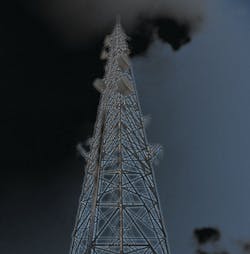AT&T makes it official: 2G service will end
On Friday, as part of issuing its 10-Q filings with the SEC, AT&T Inc. formally announced its plan to sunset 2G technology. It’s important for the security industry according to an alarm communications technology expert because most cellular alarm system communicators use AT&T’s network to reach their monitoring stations.
Here’s what AT&T stated in their Aug. 3, 2012, 10-Q filings: "As part of our ongoing efforts to improve our network performance and help address the need for additional spectrum capacity, we intend to redeploy spectrum currently used for basic 2G services to support more advanced mobile Internet services on our 3G and 4G networks. We will manage this process consistent with previous network upgrades and will transition customers on a market-by-market basis from our Global System for Mobile Communications (GSM) and Enhanced Data rates for GSM Evolution (EDGE) networks (referred to as 2G networks) to our more advanced 3G and 4G networks. We expect to fully discontinue service on our 2G networks by approximately January 1, 2017. Throughout this multi-year upgrade process, we will work proactively with our customers to manage the process of moving to 3G and 4G devices, which will help minimize customer churn. As of June 30, 2012, approximately 12 percent of our postpaid customers were using 2G handsets. We do not expect this transition to have a material impact on our operating results, but will continue to evaluate the financial impact of transitioning customers from 2G devices to 3G or 4G devices."
Telguard’s Shawn Welsh says the date shouldn’t come as a surprise to vendors in the industry, who he says were advised of these plans as early as March 2011. "We knew that date all along, but were under a gag order not to say it. The fact that AT&T is finally on the record should bring it home for the alarm industry; now it’s real." Now, says Welsh, alarm dealers and manufacturers need to get busy moving customers to more modern communication technologies before that 2G technology fades into the sunset.
Welsh estimates that the majority of alarm communicators use AT&T’s 2G network, and says there are probably around 3 million of the 2G cellular alarm communicators installed in the United States. That’s complicated by the fact that 2G communicators are still the normal product installed. His own firm switched over to offering only 3G/4G communicators earlier this year (based on their knowledge of the Jan. 1, 2017 sunset), but otherwise few products support the new format. (An exception is Honeywell’s new LYNX Touch 5100, which has a cellular communicator that supports 2G, 3G and 4G using AT&T’s network).
Welsh’s advice to dealers is simple. He says they shouldn’t install another 2G unit unless they have no plans to be working with that customer in four years when AT&T’s 2G support is all but gone. But since the average account lives are over five years in the industry, it’s better to go ahead and put in current technology today, rather than to have to upsell that customer and roll another truck in four years.
Dealers bemoaning the lack of choice in the communicators market should not have to worry much longer, he adds, noting that he expects a flood of 3G/4G communicator products to enter the market now that AT&T has put its plans on the record. The process isn’t exceptionally difficult on a technical level, but he says the industry has been slow to move to 3G/4G products because the hardware actually costs more, and that puts manufacturers in a quandary of whether to keep prices the same (as his firm did) and lose margin on their hardware, or to raise prices on the newer hardware and maintain their margin. It’s a difficult business decision, he admits, that has slowed product launches in the alarm communicator market.
Some alarm accounts, however, may not be impacted. T-Mobile’s sunset for 2G is much further out than AT&T’s, but the problem, says Welsh, is that T-Mobile’s network is much smaller than AT&T’s, and that means most communicators are actually on the AT&T network, even if they have T-Mobile network capabilities. Furthermore, some companies’ communicators are licensed through regional carriers in specific states, but those communicators work outside those areas because those regional cellular carriers have roaming agreements with AT&T and T-Mobile. The danger, he says, is that you may not have direct information on that regional carrier’s 2G plans, but if that unit was installed in a roaming location that uses AT&T’s network, then your alarm subscriber may be impacted anyway.
While our industry fought the AMPS sunset, he says that it would be unwise to expect AT&T to delay any sort of 2G technology end of life process because of pressure from the Federal Communications Commission (FCC). "It is a business decision made by the carriers and is not within the jurisdiction of the FCC. The FCC is not going to ride in and push this thing back. They don’t have the say on whether AT&T can do this."




